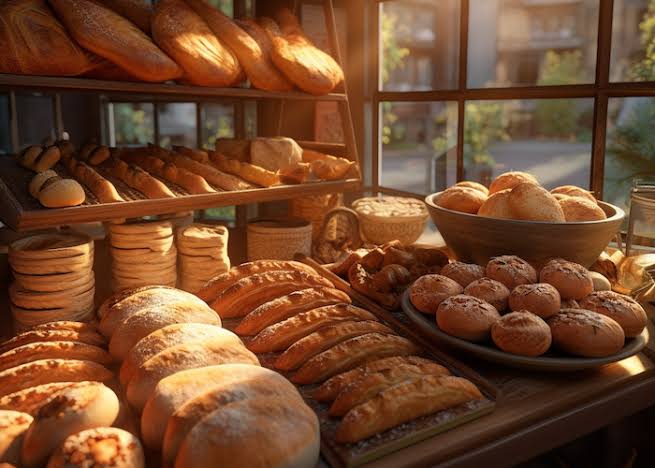How to Start a Bakery Business From Home: A Step-By-Step Guide

Starting a bakery business from home can be a fulfilling venture for those who are passionate about baking and want to turn their skills into a profitable enterprise. In this comprehensive guide, we will walk you through the steps to start your home bakery successfully.
Embarking on Your Home Bakery Journey
Before we dive into the details of setting up your home bakery, let’s explore why this endeavor is both exciting and promising.
Setting the Stage
Preparing to Start Your Home Bakery
Before you roll up your sleeves and start baking, there are some essential preparations to consider.
Step 1: Legal Requirements
Navigating the Legal Aspects
Understanding the legalities of operating a home bakery business is crucial.
- Research and comply with local and state regulations regarding home-based food businesses.
- Obtain the necessary permits and licenses, such as a food handler’s permit or cottage food license.
Step 2: Business Plan
Mapping Out Your Bakery Business
Creating a solid business plan is the foundation of your home bakery.
- Define your bakery’s niche and target audience.
- Determine your unique selling proposition (USP) – what makes your baked goods special.
- Plan your budget, including startup costs, pricing, and expected revenue.
Baking the Dream
Starting Your Home Bakery
Now that you’ve set the stage, let’s get into the actual process of starting your home bakery.
Step 3: Design Your Home Kitchen
Crafting Your Baking Haven
Your home kitchen will be your bakery’s heart, so ensure it’s set up for efficient production.
- Organize your kitchen with essential baking equipment.
- Create a dedicated workspace and storage for your baking supplies.
Step 4: Recipes and Menu
Curating Your Bakery Menu
Decide what you’ll bake and offer to your customers.
- Develop your signature recipes for a variety of baked goods.
- Create a diverse menu including bread, cakes, cookies, pastries, or any specialties you excel at.
Step 5: Ingredients and Suppliers
Sourcing Quality Ingredients
Find reliable suppliers for your baking ingredients.
- Source fresh and high-quality ingredients from local or trusted suppliers.
- Maintain a detailed inventory of your ingredients.
Step 6: Pricing and Cost
Assessing Your Cost of Goods Sold (COGS) in Your Bakery Business
In your bakery business, it’s essential to understand and assess your Cost of Goods Sold (COGS) as it directly impacts your profitability. This guide will help you evaluate and manage your COGS effectively
To assess your COGS, you need to calculate it accurately. The basic COGS formula is:
COGS = Opening Inventory + Purchases – Closing Inventory
Ensure that your pricing covers your expenses and provides profit.
- Categorize Your Ingredients: Organize your ingredients into categories (flour, sugar, eggs, etc.) to track their costs effectively.
- Set Par Levels: Determine the minimum quantities of each ingredient you need to maintain. Reorder when they reach these levels.
- Use a First-In-First-Out (FIFO) System: Consume older ingredients before using newer ones to prevent wastage.
Step 7: Branding and Marketing
Creating Your Brand Identity
Start building your brand and marketing your home bakery.
- Design a unique and appealing brand logo and packaging.
- Establish an online presence through a website and social media platforms.
- Develop a marketing strategy to reach your target audience.
Serving Your Delights
Launching and Operating Your Home Bakery
With all the groundwork laid, it’s time to launch and run your home bakery.
Step 8: Orders and Deliveries
Managing Orders and Deliveries
Set up a system to receive and fulfill orders.
- Create an order process, including order placement, payment, and delivery options.
- Ensure efficient and hygienic delivery of your baked goods.
Step 9: Customer Service
Providing Exceptional Customer Service
Customer satisfaction is key to a successful home bakery business.
- Be responsive to customer inquiries and feedback.
- Offer a pleasant and memorable buying experience.
Step 10: Quality Control
Ensuring Consistency and Quality
Maintain consistent quality in your baked goods.
- Implement quality control measures to ensure each product meets your high standards.
Step 11: Track Purchases
Monitoring Ingredient Purchases
To assess your COGS, you must keep a close eye on your ingredient purchases.
- Record All Purchases: Maintain detailed records of every ingredient purchase.
- Check Supplier Invoices: Ensure the accuracy of supplier invoices.
Your Home Bakery Journey Begins
As you embark on your home bakery journey, remember that success takes time and dedication. Continue to learn and improve your baking skills and your business acumen.
FAQs
Answering Your Questions
Here are some common questions about starting a home bakery:
Q1: Can I run a home bakery without legal permits?
- A: No, it’s essential to comply with local and state regulations and obtain the required permits and licenses.
Q2: How can I market my home bakery effectively?
- A: Utilize online platforms, social media, and local marketing to reach potential customers.
Q3: What’s the best way to set prices for my baked goods?
- A: Calculate your costs and pricing based on ingredients, labor, and profit margin.
Q4: How do I manage orders and deliveries efficiently?
- A: Set up an organized system for receiving orders, processing payments, and ensuring timely and safe deliveries.
Q5: What’s the key to ensuring consistent quality in my baked goods?
- A: Implement strict quality control measures, follow recipes meticulously, and maintain high standards in your baking process.
Starting a home bakery is a rewarding journey filled with the sweet satisfaction of sharing your delicious creations with others. With dedication and a passion for baking, you can build a thriving home bakery business that delights customers and fulfills your dreams.






